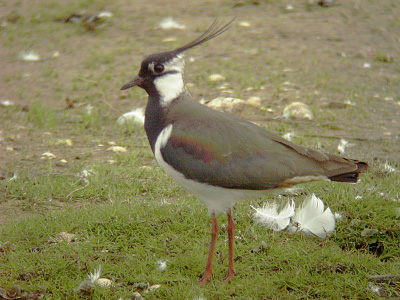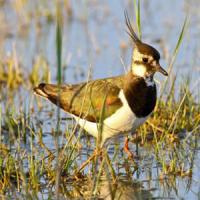- Home
- FAQs
- Customer Video Gallery
- Customer Photo Gallery
- Bird Facts
- Bird Food Blog
- Bird Information
- Feeding Advice
- Small Animal Information
- A to Z of Guinea Pigs
- A to Z of Hamsters
- A to Z of Rabbits
- Basic Care for Guinea Pigs
- Basic Care for Hamsters
- Basic Care for Rabbits
- Basic care for Chinchillas
- Basic care for Ferrets
- Basic care for Gerbils
- Basic care for Mice
- Basic care for Rats
- Buying a Healthy Small Animal
- Does your Reptile need a Licence
- Equipment for Ferrets
- Equipment for Hamsters
- Equipment for Mice
- Equipment for your Chinchilla
- Equipment for your Gerbil
- Equipment for your Guinea Pig
- Equipment for your Rabbit
- Keeping a House Rabbit
- Dog Information
- Cat Information
- Customer Information
- Fat Balls
- Suet Pellets
- Straights
- Seed Mixes
- Suet Treats
- Mealworms
- Bird Feeders
- My Account

| Scientific Name | Vanellus vanellus |
| Breeding | late-March |
| Fledge Days | 35-40 |
| Incubation Days | 25-34 |
| Lifespan | 5 |
| Number of Clutches | 1 |
| Number of Eggs | 2-5 |
| Size | 30cm |
| Weight | 230g |
| Wingspan | 84cm |
Bird Family : Lapwings
Lapwing Facts - Information About Lapwing
Northern Lapwing - Vanellus Vanellus
An instantly recognisable wader that is reasonably numerous in suitable habitat. It is the only British wader that sports a crest in all plumages and in both sexes. Lapwings are very adaptable and occur on coastal and inland sites in a wide variety of habitats. The Lapwing is also known as the ‘Peewit’ which is taken from the birds call.
Identification:
Adults
- The combination of black and white plumage and a long black crest makes the Lapwing an instantly recognisable wader.
- Adult males and females are alike.
- Lapwings are members of the Plover family, a large wader by UK standards around 30cm in length.
- The upperparts appear black at a distance, but when seen closely they are actually dark shimmering iridescent greens and purples.
- The head shows a combination and black face, chin, breast, crown and stripe over the cheeks.
- The rest of the head is white, cheeks and eye-stripe.
- The rear of the head is mid-brown.
- This is topped off with a fine black wispy crest.
- Underparts are white apart from the undertail coverts which are orangey brown.
- In flight the large rounded wings show white primary tips whist the white tail shows a black tail band.
- Bill and eye black, legs long and pink.
Juveniles
- Juveniles appear from May onwards and look similar to the adults; however the upperpart feathers have buffy fringes giving a scalloped pattern.
- The head pattern is slightly less developed than the adults and the crest much shorter.
- Bill and eye black, legs long and pink.
Status and Distribution
The Lapwing is a very abundant breeding resident in the UK, however numbers have declined over the last 15 years and at present we have approximately 150,000 pairs.
The Lapwing occurs in all counties of the UK.
Habitat / Food
Lapwings occur in a variety of habitats from coastal marshes to farmland, moorland, heathland, mudflats and estuaries.
They are adaptable feeders taking a large variety of invertebrates, small fish, small amphibians and seeds/vegetable matter.
Song / Call
The most usual call is a loud drawn out ‘peeewitt’ – ‘chewittt’ . Display flight/song is a loud and similar to call but longer…’cheww…wit..wit…wit..chewowitt.






